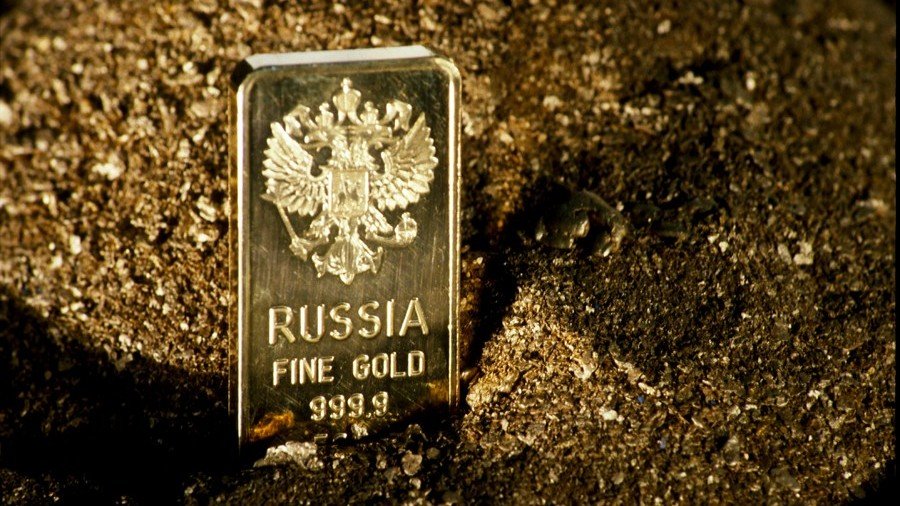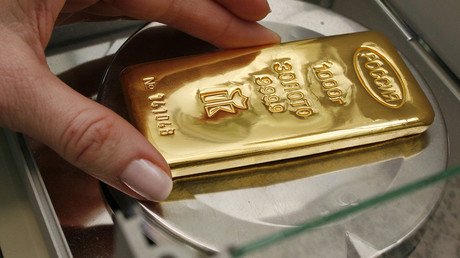Where does Russia keep its huge gold reserves?

Amid growing uncertainty across global financial markets fueled by both geopolitical and trade conflicts, countries and investors have traditionally sought safety in gold.
Some nations have started to either repatriate gold from abroad or actively buy the precious metal over recent years. Last year, the German central bank (Bundesbank) brought back 674 tons of gold reserves kept in Paris and New York since the Cold War. Earlier this year, Turkish media reported that in 2017 Ankara repatriated 220 tons of gold from abroad with 28.7 tons was brought back from the US. At the same time, the National Bank of Hungary announced plans to repatriate the country’s 100,000 ounces (3 tons) of gold reserves from London.
Over the recent decade, central banks across the globe turned from being net sellers of gold to net buyers of gold with official sector activity jumping 36 percent to 366 tons in 2017 against the previous year. Demand in the first quarter of the current year was up 42 percent year-on-year, with purchases totaling 116.5 tons for the highest first quarter total since 2014, according to the World Gold Council.
Russia, which is currently number five among the countries with the largest gold reserves of nearly 2,000 tons, has been the biggest purchaser of the precious metal for the past six years. In 2017, the country’s central bank bought 224 tons of bullion with another 106 tons purchased in the first six months of the current year. The Bank of Russia explains the strategy as part of diversifying the country's reserves away from the US dollar.
Nearly two thirds of the nation’s gold is reportedly kept in a Central Bank repository in Moscow with the rest is stored in the country’s Northern capital of St. Petersburg and the Ural city of Yekaterinburg. Russia’s gold is reportedly kept in bullions weighing from 100 grams to 14 kilograms.
'Gold has neither credit nor default risk' - economics expert https://t.co/s51wuerKF3
— RT (@RT_com) July 22, 2018
The nation’s affection for gold dates back to the Tsarist era. At the time, the precious metal was used to boost the national currency. In 1894, the Russian Empire’s gold reserves reached 1,400 tons, and were the world’s largest until 1914. Gold holdings were significantly run down by the First World War and the subsequent Russian Revolution, as Russia had to pay off loans to foreign banks. Most of the Tsarist era reserves were spent by the Bolshevik government on food and industrial equipment with only 150 tons remaining in the treasury by 1928.
During the Stalin era the country’s gold bullion reserves grew again, as the Soviet leader believed the precious metal to be one of the key pillars for the economy's rapid industrialization. Gold reserves increased to 2,500 tons during the period, but gradually decreased to only 290 tons by October 1991.
'Hand of Faith', 'The Great Triangle' & more: World's 5-largest gold nuggets that haven't been melted down https://t.co/JhYkaOTrnO
— RT (@RT_com) March 4, 2018
Russia’s gold mines are mostly located in the Far Eastern region of Magadan. The precious metal is also mined in Chukotka, Yakutia, Irkutsk and Amur region, Zabaykalsky Krai, as well as in the regions of Sverdlovsk and Chelyabinsk and the republics of Buryatia and Bashkortostan.
Among the biggest companies mining gold in the country are; Polyus Gold, one of the 10 biggest gold mining companies globally by output, Toronto-based Kinross Gold Corporation, and Russia’s miners Polymetal International, UGC group and GV Gold.
For more stories on economy & finance visit RT's business section















